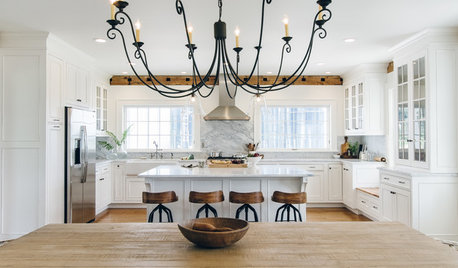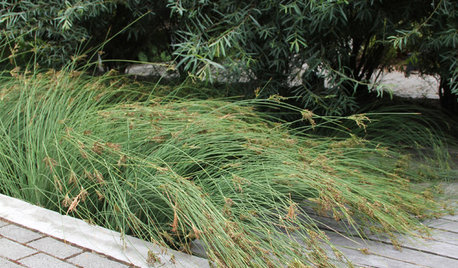Peak Oil+Beginning Balcony Gardener=A lot to learn fast
corporationsrule
18 years ago
Related Stories

EDIBLE GARDENS8 Surefire Vegetables and Herbs for Beginning Gardeners
Learn the edible plants that are popular and easy to grow in a backyard or container garden
Full Story
WHITE KITCHENS4 Dreamy White-and-Wood Kitchens to Learn From
White too bright in your kitchen? Introduce wood beams, countertops, furniture and more
Full Story
SELLING YOUR HOUSESell Your Home Fast: 21 Staging Tips
Successful staging is key to selling your home quickly and at the best price. From cleaning to styling, these tips can help
Full Story
GARDENING GUIDESProtect a Precious Resource With a Rain Garden
Promote pure water and a beautiful landscape with a garden design that makes the most of the rain
Full Story
FRONT YARD IDEAS10 Ideas for a Front-Yard Edible Garden Your Neighbors Will Love
Choosing attractive, well-mannered plants and sharing the bounty will go a long way toward keeping the peace
Full Story
GREAT HOME PROJECTSHow to Replace Your Lawn With a Garden
New project for a new year: Lose the turfgrass for energy savings, wildlife friendliness and lower maintenance
Full Story
SAVING WATERXeriscape Gardens: How to Get a Beautiful Landscape With Less Water
Conserve water and make gardening much easier with the xeriscape approach’s 7 principles
Full Story
EDIBLE GARDENSHow to Grow Your Own Sweet Summer Crops
This guide will help any gardener get started on growing the freshest warm-season veggies and berries for summer
Full Story
KITCHEN DESIGN9 Questions to Ask When Planning a Kitchen Pantry
Avoid blunders and get the storage space and layout you need by asking these questions before you begin
Full Story
MOST POPULARWhat to Know About Adding a Deck
Want to increase your living space outside? Learn the requirements, costs and other considerations for building a deck
Full Story





kjggames
corporationsruleOriginal Author
Related Professionals
Middle Island Landscape Architects & Landscape Designers · Alamo Landscape Contractors · Bell Gardens Landscape Contractors · Fort Atkinson Landscape Contractors · Fort Hunt Landscape Contractors · Hilo Landscape Contractors · Las Vegas Landscape Contractors · Mendota Heights Landscape Contractors · Mesa Landscape Contractors · Oak Harbor Landscape Contractors · Oakland Landscape Contractors · Round Lake Landscape Contractors · Plano Siding & Exteriors · Forest Park Solar Energy Systems · Whitney Solar Energy Systemskjggames
corporationsruleOriginal Author
locust
corporationsruleOriginal Author
corporationsruleOriginal Author
Belgianpup
huisjen
corporationsruleOriginal Author
huisjen
pnbrown